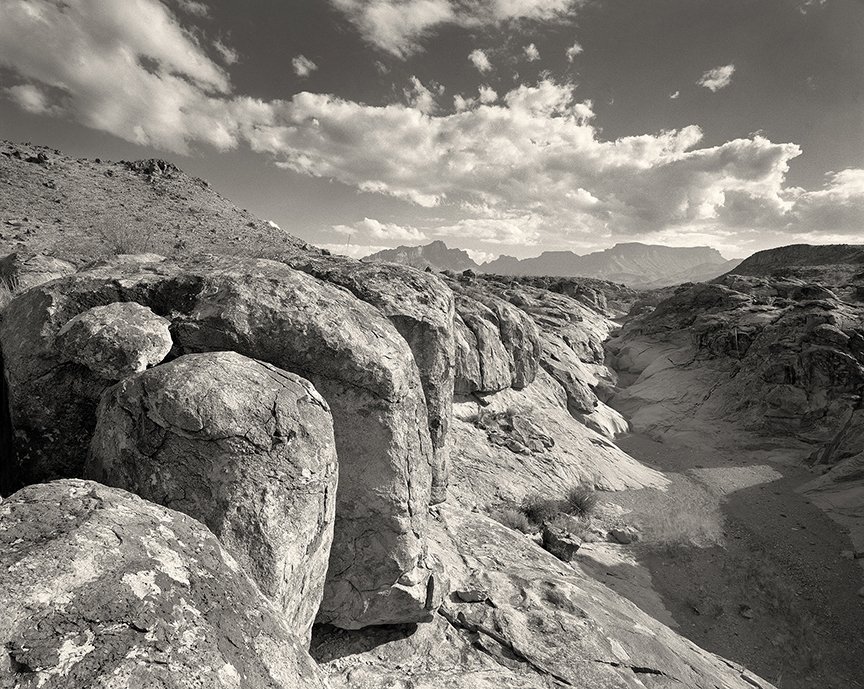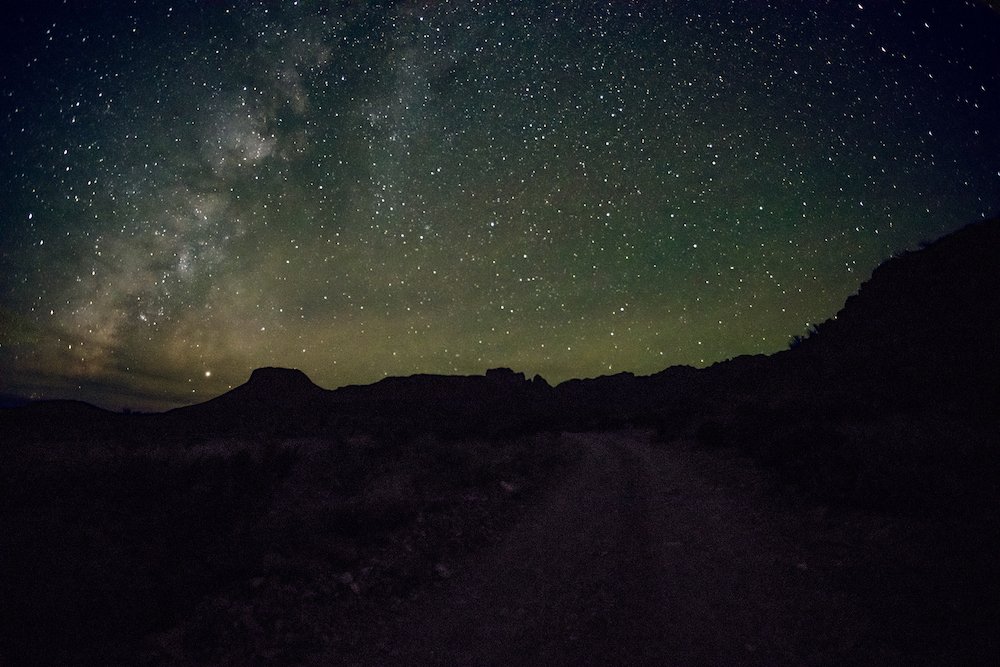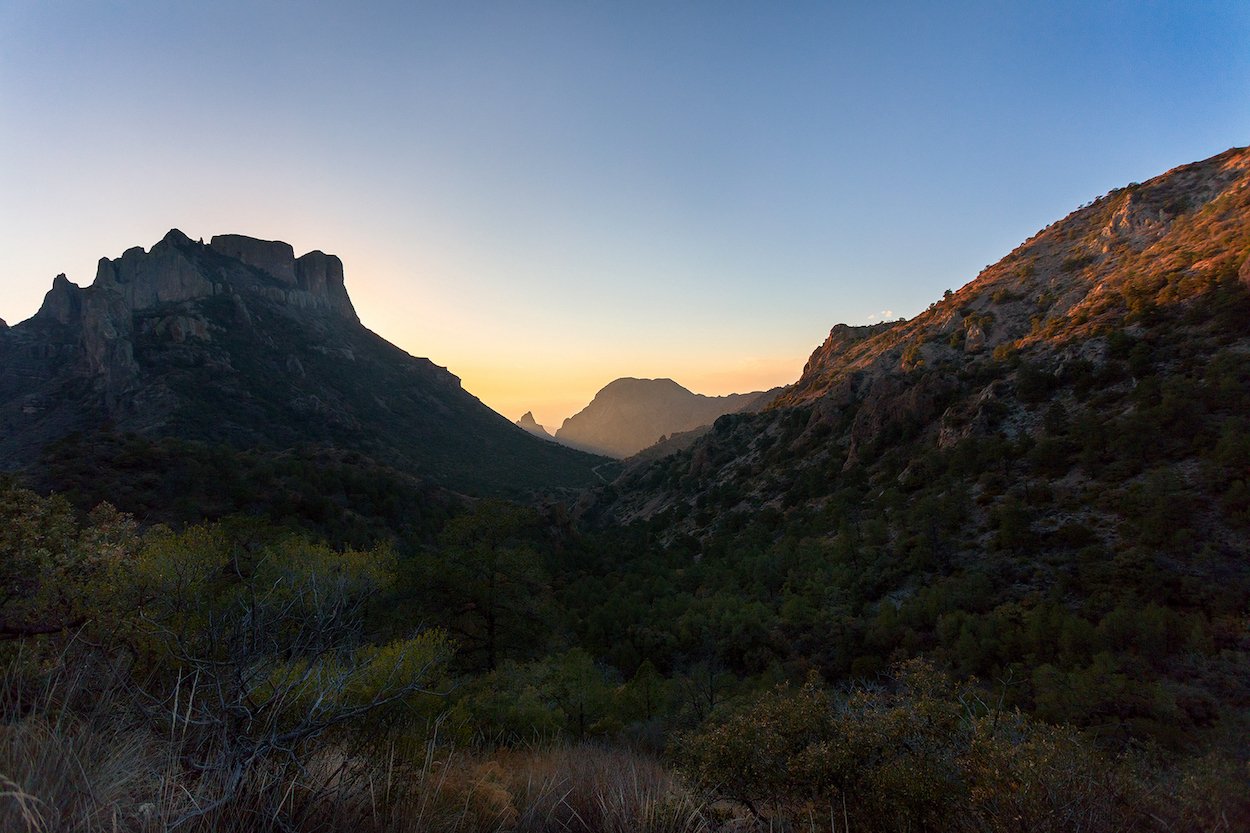Interview with artist George Chambers, Jr.
George Chambers, Jr. is a photographer living and working in Little Rock. For George, landscape photography allows him to depict the world without familiar symbols like the human face. This encourages the viewer to explore his photographs more deeply and project their own feelings and meanings onto the piece. More of George’s photographs can be viewed at Justus Fine Art Gallery in Hot Springs. (profile photo by Rick Singer)



AAS: George, are you originally from Arkansas?
GC: I was born at San Antonio, Texas in 1952. My parents were both Captains in the US Army at Fort Sam Houston. My mother retired when I was born, but my father went into the new US Air Force. We traveled a lot, moving to a new posting almost yearly. My parents bought land in Baxter County in 1954. That was our summer place and my sister and I still own the property. I’ve never lived up there.
In 1959 we moved from Illinois to Wiesbaden, Germany for 4 years. Unlike most Americans in Europe, who stayed on base and never interacted with the Germans, we lived off base and learned to speak German. The military was not well paid, so we adopted the European post war craze for camping. We visited every European country that was not in the Soviet Union. We were in Europe during the Cuban Missile Crisis and when they built the Berlin wall. That experience gave me a lifetime interest in travel and history.
In 1968 Dad retired from the Air Force and we moved to Little Rock, Arkansas. He was chief of the Orthopedic program at UAMS. I met Susan Baker in honors English in 11th grade at Hall High School. We hung out together off and on through the years, finally getting married in 1981 after I finished my Commercial Photography degree at Brooks Institute and Susan got her MFA in painting at University of Georgia at Athens.
AAS: Did you have an interest in photography as a kid?
GC: My parents loved photography, although mom was the better of the two. In the late 1940’s mom had belonged to a camera club at Fort Clayton in the Panama Canal Zone. I still have all her Kodachrome slides.
My uncle trained at Rochester Institute of Technology (RIT) and was a medical photographer in Pittsburg, Pennsylvania. I almost applied to RIT, but Brooks Institute in Santa Barbara, California was more attractive. New York winters versus the beach in southern California.
I was accepted to Brooks but had a 1.5 year wait to begin. I attended junior college in Temple, TX during that wait. I ran the framing business at a portrait studio to save money. The studio was my first opportunity to see a professional photographer work.
The studio owner had joined with several others to form a canoe outfitting business with the sole purpose of taking as many people as possible through the Rio Grande canyons in Big Bend National Park. The Corp of Engineers had plans to build 3 large lakes on the river. At that time, very few had canoed the canyons in the park. The outfitting company took a 60 Minutes team through the canyons and also Chief Justice Warren Burger. I got to canoe for free if I helped drive and cook. Two of the three lakes were canceled. Lake Amistad is the only one built.
This all happened at the same timeframe that Arkansas conservationists were fighting the battle to stop the damming of the Buffalo River. Photography has always been a powerful technology. It helped shine a light on issues the public needed to be aware of.
AAS: The technical aspects of photography have changed dramatically over the years, and you have used both digital and film and a variety of printing processes. How has your approach to photography changed over the years?
GC: At Brooks, we had technology week every year. In 1980 the Kodak representative talked about digital photography. In 1980 there was no digital photography, no useful computers. The Macintosh came out in 1984. Revolutionary, but terribly underpowered. The potential was obvious, but technology had to make big leaps before it replaced film. My workflow now has totally replaced what I did 20 years ago.
I use digital images, scanned from old film or from a digital camera. I use an inkjet printer to make color prints or enlarged negatives for making traditional palladium prints. A large community of photographers working in alternative processes is accessible on the internet. Not to minimize the importance of digital photography, but the rise of the internet has opened up the world for all artists with easy communication and access to vast amounts of information. At that time the internet was totally new. Photography as a mature technology already existed.
AAS: The first photograph I want to talk about is October’s Ghost. It is lovely and so interesting. Tell me about it. Where was it taken?
GC: October’s Ghost was made at Pinnacle State Park. The sycamore leaves in the foreground moved in the breeze and are slightly blurry. I thought it was ruined, but after looking at it awhile I decided the ghostlike leaves represented the ghost of October. October is leaving us and the trees are bare. This is from a 4”x5” b&w negative.
October's Ghost, 30" x 14", giclee prints on paper and canvas, original from 4”x5” b&w negative
“I don’t create the subject, I discover it.”
AAS: You’ve said that composition simplifies and organizes what could be a chaotic or overwhelming visual into something the viewer can process and therefore enjoy. To me this is true for painting or drawing or sculpture as well. But you don’t create the composition of your photographs – you find it. Is it that challenge that makes photography so exciting to you?
GC: I chose photography because my subject matter is outside of myself. The act of identifying and interacting with interesting subject matter has the healthy effect of grounding me. I don’t create the subject, I discover it. Making a composition is a creative act, because the image usually needs some structure to guide the viewer to see. Composition is an exquisite struggle.
Field cameras are unique. The image on the ground glass is upside down and backwards. I learned to look at the ground glass as a 2 dimensional rectangle and not really pay much attention to what was out in front of the camera. I can move things around on the rectangle by moving the camera, changing the lens for a different angle of view. I can shift parts out of focus, place other parts in focus. I can come back at another time when the light is better. More control comes from manipulation in the darkroom.
I like the analogy that the capture of an image is like writing a musical score. The capture needs to record everything relevant in that negative. Unedited, the image may be bland and unremarkable. Performing the print is taking that capture and deciding how to interpret it. Certain elements get pushed down and others brought out.
Finding the subject matter is primary. Good subject matter is the lifeblood of the photographer. Photographers have been referred to as the “drawing impaired”. It gives us a huge advantage, but on the other hand, we are forced to deal with what is outside our heads and in front of our lenses. Other than that, we struggle to make compositions just like any artist.
AAS: Tell me about Sierra Del Carmen. I especially like the way the composition of the foreground balances the penetrating color of the background.
GC: This is a milestone for me, my first successful HDR panorama. The camera is on a tripod, shooting rows of overlapping frames. Each frame is shot 4-5 times, each at a different exposure. The idea was to try to hold the huge brightness range. So, about 20 images stitched together in Photoshop. The main problem was that doing all these exposures took long enough that the right side is considerably lighter than the left. Photoshop magic to the rescue. The foreground was almost black and judicious dodging made the sagebrush visible. Sierra Del Carmen, on the horizon, is on the Mexican side of the river. This is one of Mexico’s newest National Parks. I haven’t been over there yet. Big Bend National Park is 600 miles from Dallas. The Pacific Ocean is only 400 miles to the southwest.
Sierra Del Carmen, 9.4″ x 22″ giclee print on paper, digital
AAS: What is it about the natural landscape that fascinates you or compels you to explore it with photography? Is it just the challenge of finding the right composition?
GC: Working inside and having just a few weeks of vacation time from the studio was very confining. Road trip! Eventually I stop the car, get out and I am still. After a half hour or so, I start to feel the breeze and become aware of the grass moving and the birds singing. Something really lovely is sitting right there in front of me. Should I photograph it or just enjoy it? That’s the magical part of the process. Then out comes the camera and I do the calculations and make the exposure. Driving home I can see the image in my mind. Sometimes I get home and I can’t find an image. Oh yeah, it rained before I could expose the film. But I still carry that image in my head.
AAS: In Red Nopal Cactus, color is almost an abstract element. Tell me about that piece and what it was like to work with Fujichrome film.
Red Nopal Cactus, 16″ x 20″, giclee print on paper, 4”x5” Fujichrome film.
GC: I like the idea of composing images that don’t have a clear subject. Although they may contain objects, the image is abstract. Maybe not having a clear subject frees the viewer to see what they want to see. So, yes these are red cacti, but…
This image is one that involved a huge amount of burning and dodging to bring out some elements and make others recede. The desert is a place that on first experiencing it, seems very colorless and unfriendly. But, it grows on you over time. Something very bland can suddenly come alive with the right lighting and the window of opportunity can be very short.
Shooting large format tends to give the work a more formal designed look than 35mm. Nothing is spontaneous about it. The camera is always mounted on a tripod. Minimum time to setup and make a photo was 15 minutes and often longer if I had to switch lenses. Exposures were usually at least 1 second up to an hour.
Shooting large film, I developed a meditative process to help me locate my subject. I’ve not really been able to carry over that process to digital photography. Shooting the digital panoramas is an attempt to do that, but it’s not the same. On film, I was working in a 4” x 5” rectangle. Doing the digital panoramas, I don’t have a nice rectangle to work with and never know quite how the image will come together, so it’s harder to visualize the result. Digital does give instant feedback.
AAS: You’ve also photographed the ‘’un-natural” landscape during some of your travels. Paris Rooftops is a wonderful image.
Paris Rooftops, 19" x 12.5", giclee print on paper, 35mm Fujichrome film
GC: The Paris Rooftops was from the escalator on the side of the Pompidou Museum. Just a snapshot on 35mm film. This image and others on that roll of film did give a clue to the world of hidden gardens, little private places that one will never know about as a tourist. We’re voyeurs at heart. The red chimneys tie it together, but I wasn’t aware of the chimneys when I took the photo.
AAS: I guess one advantage of digital photography is the ability to work with multiple images and create interesting composites or panoramas. Tell me about photographing the old Sterling Hotel in Spokane.
GC: These three images are made using Photoshop’s panorama software. Each composed of around a hundred overlapping 50mp images, the results are over 30,000 pixels wide and about 10 GB in size. At this point I’m waiting for Adobe to increase the size limit.
The Hotel photos were made to document my Brooks classmate, Rick Singer’s natural light studio before it was gutted and converted into condos. This summer I went back and used my iPhone to shoot more panoramas of the Hotel. I haven’t had time to work on those.
Matthew Lopas, a painter you interviewed, and I have enjoyed talking about panoramas. At this point he has gotten a lot closer than I have to pulling the rabbit out of the hat. Artists always want more out of their medium than they can have, but we keep pushing our limits.
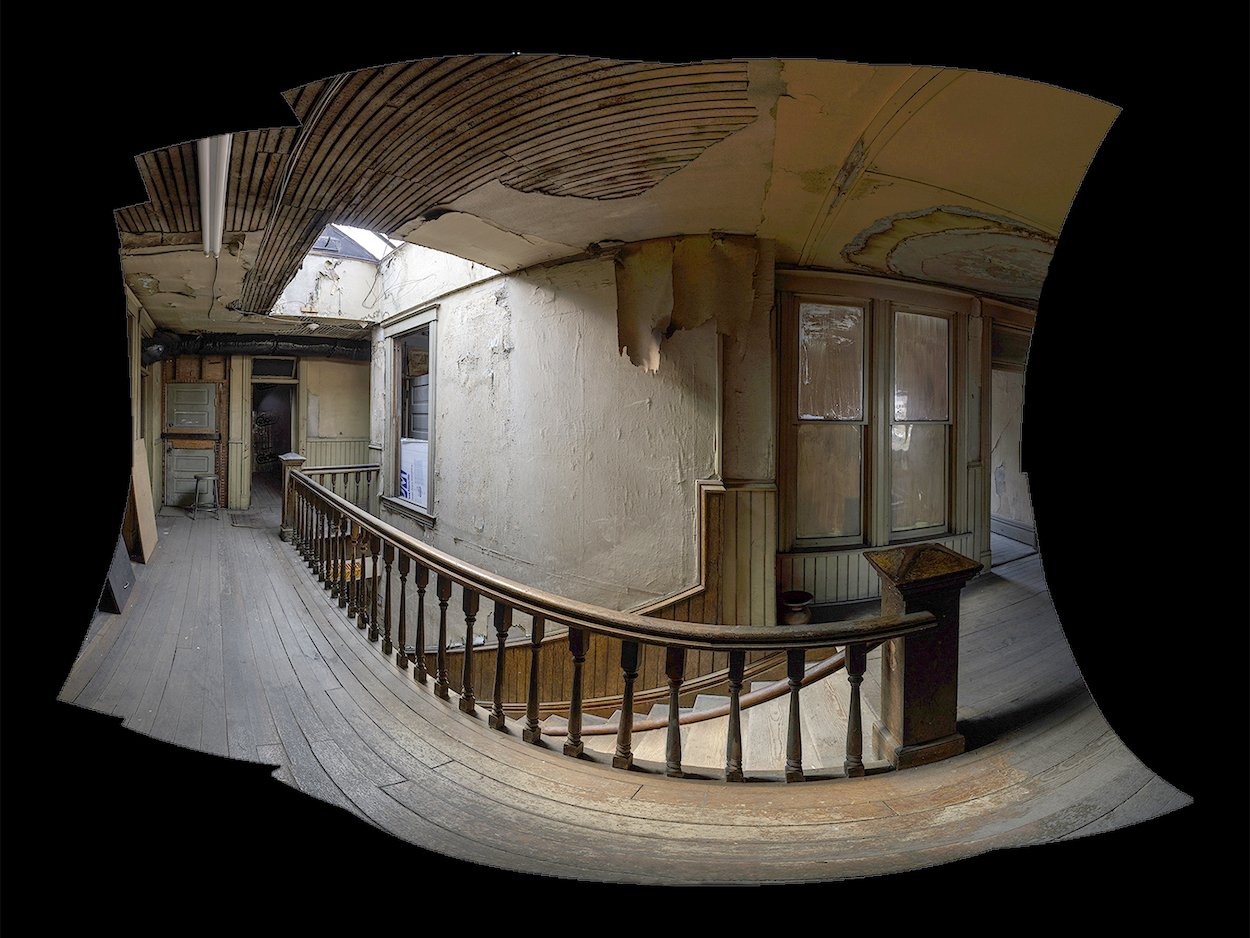
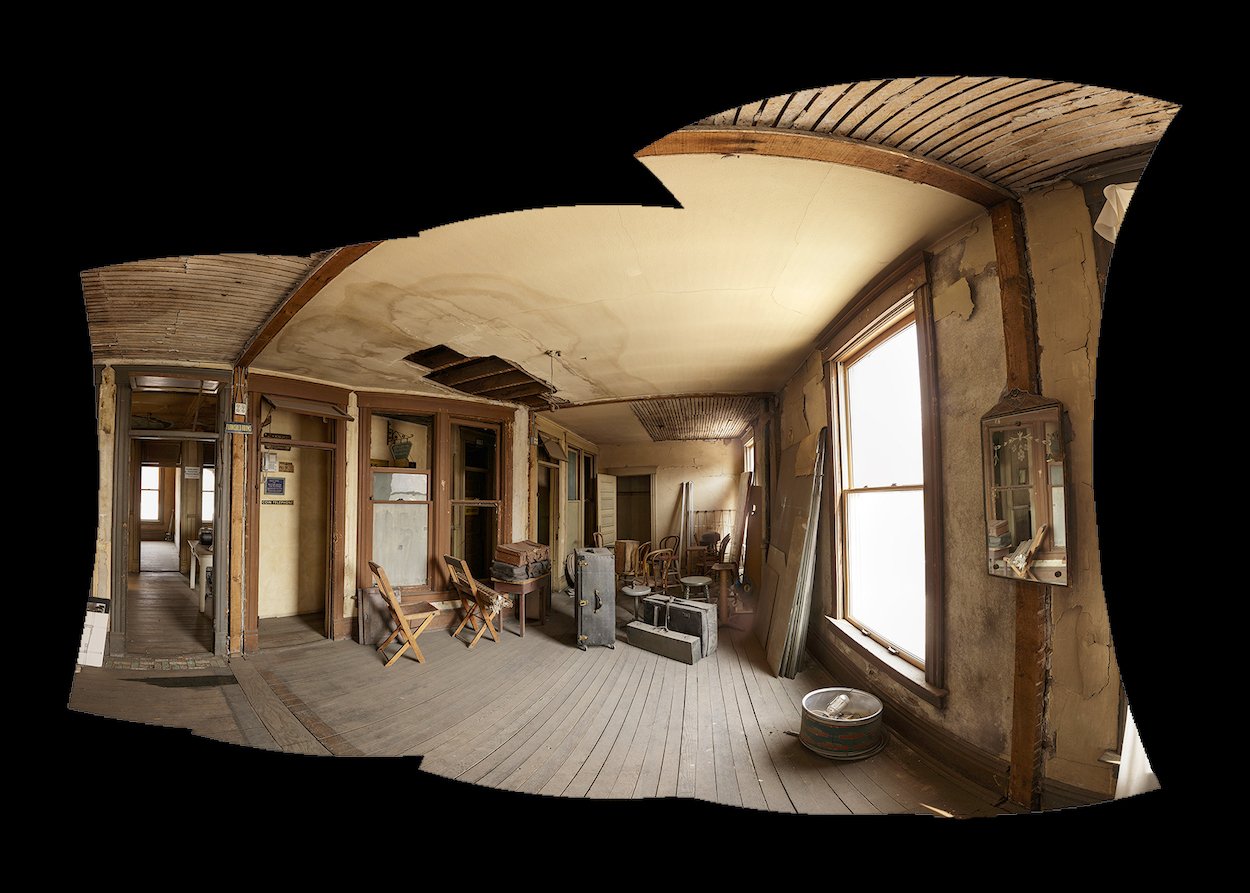
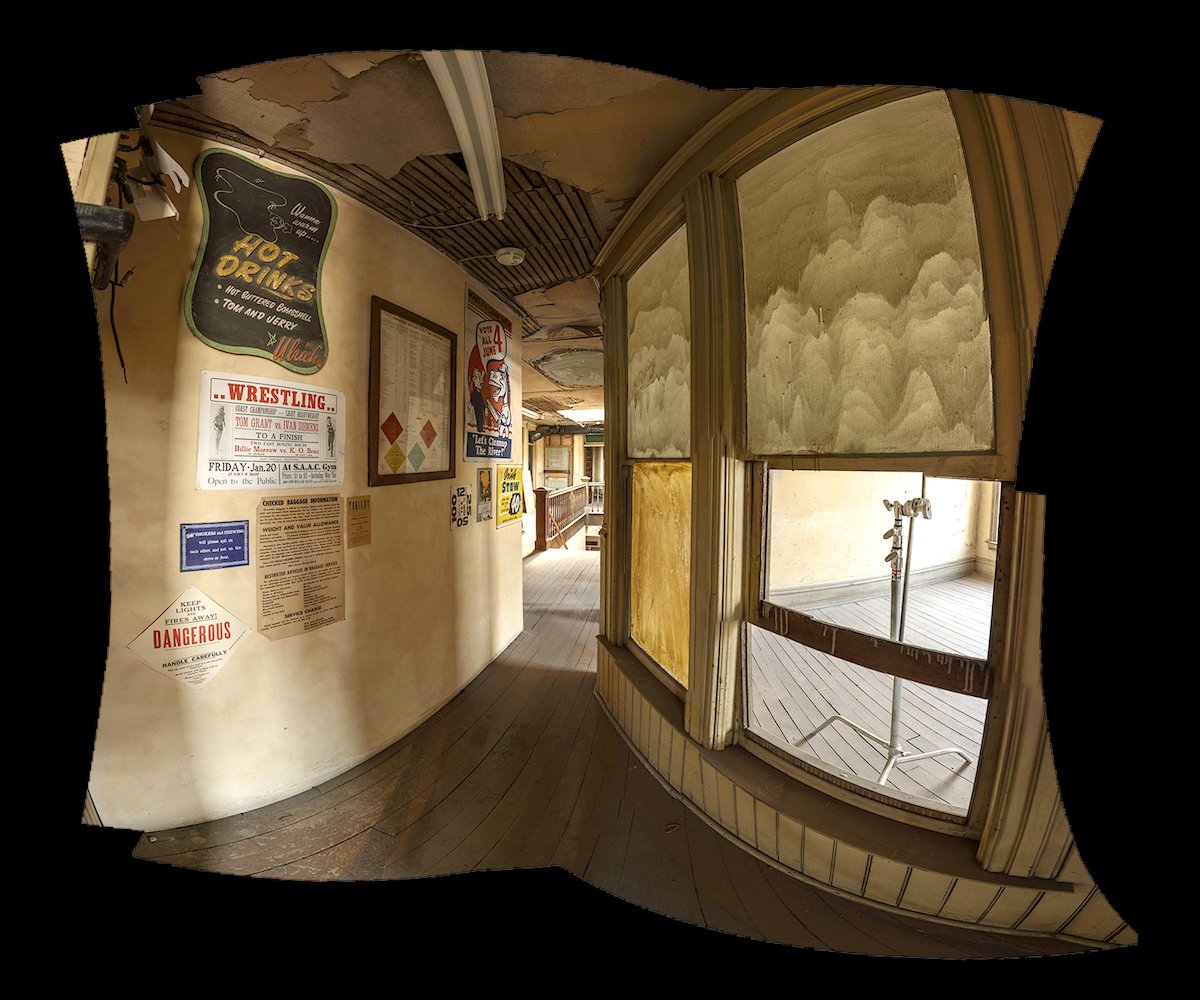
AAS: Recently, you have been using the iPhone camera. Tell me about Frost on Glass. Referring back to natural chaos, is it an image of one of nature’s abstractions?
GC: Frost on Glass was from our recent 5F winter blast. Being spontaneous has not usually been part of my bag of tricks, but the iPhone has changed that. We’re close to the point where if you can see it, you can capture it. I finally gave in and bought an iPhone 13 this summer. Not having to carry a bag of expensive and heavy cameras and lenses is a big plus.
Frost on Glass: not printed yet. Original from iPhone.
AAS: You’ve said you are nearing retirement as a commercial photographer. I know that a number of artists I have interviewed use you and your studio to photograph their pottery and sculpture. What will retirement look like for you?
GC: Visual art has become a big part of my life. No different from someone who has played video games for decades, enjoying the visual world and making photos has become an integral part of my mental process. Even without a camera, I make photographs.
Going to school in California at Brooks Institute was a good beginning. In a structured way, they gave us a very broad view of the photography industry. Having a broader view of photography made it easier to evolve. Film to digital, commercial to fine arts.
In school, I had to invent a photo business and write a business plan. I imagined a business that provided photographic services for the fine arts world. I quit shooting commercial work about 20 years ago and have only photographed artist’s artwork since then. Last year in the attic, in a trunkful of mementos, I came across my little business plan. It was an exact description of what my studio has evolved into. No mention in there about how to retire gracefully!
